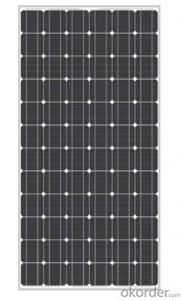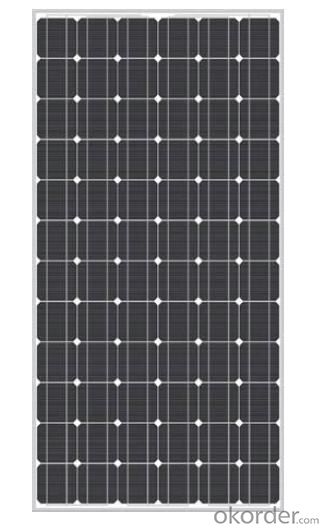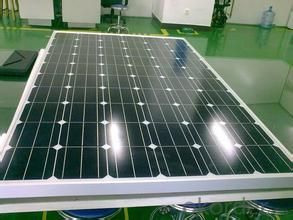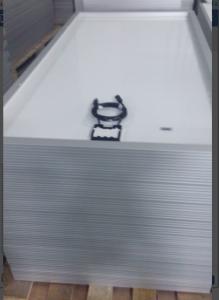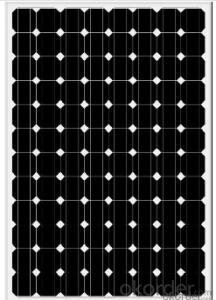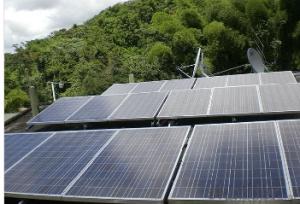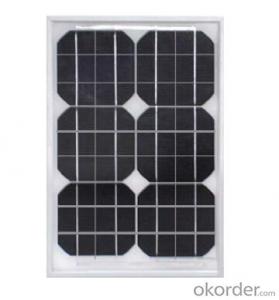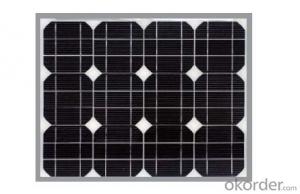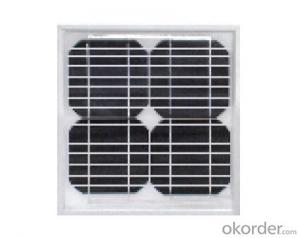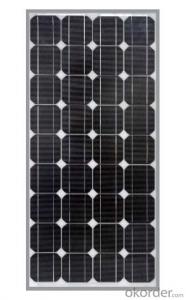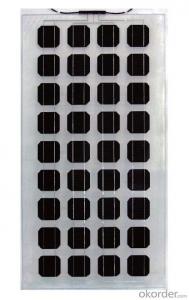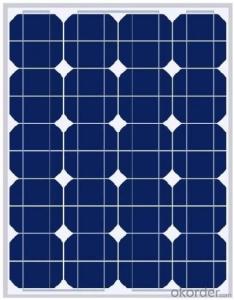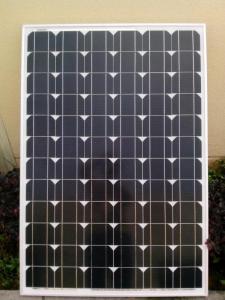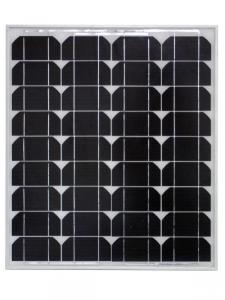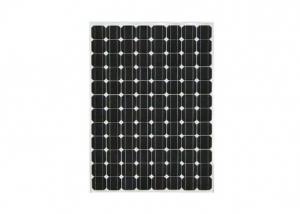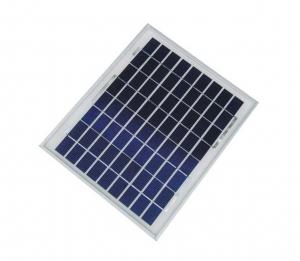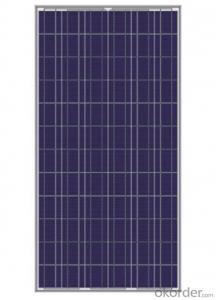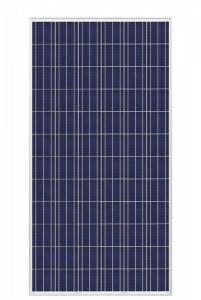Solar Panels Dallas - Monocrystalline Silicon Solar Panel Model CR150M-CR200M
- Loading Port:
- Tianjin
- Payment Terms:
- TT OR LC
- Min Order Qty:
- 5 pc
- Supply Capability:
- 1000 pc/month
OKorder Service Pledge
OKorder Financial Service
You Might Also Like
1. Structure of Monocrystalline Silicon Solar Panel Model CR150M-CR200M
Solar modules, which are widely used in ground mounted utility-scale PV plants, large-scale and small civil and commercial power generating system such as BIPV combined to the grid, roof-mounted PV power system, rural electrification, communications, emergency auxiliary power. Solar PV module is comprised of some solar cells which are connected in serial with high efficiency and enhanced reliability. The solar cells are laminated between sheets of ethylene vinyl acetate (EVA) and high-clarity low-iron tempered glass, and sealed by the silica gel in a anodized aluminum frame . The solar module has got the professional certificate as following:

2. Main Features of Monocrystalline Silicon Solar Panel Model CR150M-CR200M
Esthetic appearance, with stands high wind-pressure and snow load, and easy installation
Water resistant junction box
Design to meet unique demand of customer
25 year poweroutput warranty
3.Monocrystalline Silicon Solar Panel Model CR150M-CR200M Images
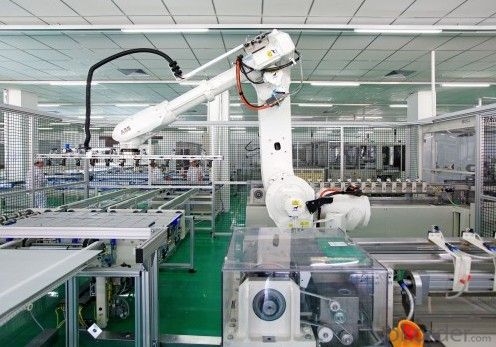
4.Monocrystalline Silicon Solar Panel Model CR150M-CR200M Specification
Solar cell dimension: 125mm×125mm
No. of cells and connections: 72(6×12)
dimension of module: 1580×808×50(mm)
Net weight: 16.2kg
Model | CR200M | CR195M | CR190M | CR185M | CR180M | CR175M | CR170M | CR160M | CR150M |
Maximum Power (Pm) | 200W | 195W | 190W | 185W | 180W | 175W | 170W | 160W | 150W |
Open-circuit voltage (Voc) | 45.0V | 44.8V | 44.6V | 44.4V | 44.3V | 44.1V | 44.0V | 43.7V | 43.4V |
Short-circuit current (Isc) | 5.50A | 5.45A | 5.41A | 5.38A | 5.29A | 5.21A | 5.17A | 5.06A | 4.96A |
Volatage at Pmax (Vmp) | 38.2V | 37.8V | 37.4V | 36.8V | 36.6V | 36.4V | 36.0V | 35.0V | 34.2V |
Current at Pmax (Imp) | 5.24A | 5.16A | 5.09A | 5.03A | 4.92A | 4.82A | 4.73A | 4.58A | 4.39A |
Maximum system voltage | 1000VDC | ||||||||
Operating temperature | -40℃ to +85℃ | ||||||||
5. FAQ
(1) Can you offer the test report of the module?
Sure. All the solar modules must pass necessary tests including EL test and ultra-red test and other visual test of the apperance, and the test report presents all the detailed data of the modules.
(2) How to confirm about the quantity and the type of solar module?
It depends on the solar system where you want to put into use the solar modules. We have experienced engineers to design for your order and you need to give more information to fix the details.
(3) How long will you deliver the solar modules?
We need to purchase the materials according to the list confirmed by you and put into production, and we will do our best to get your satisfaction.
- Q: I know that one LED can't power a solar panel. I have found 40 kmcd LED's on OKorder. I know that several of them (28 totale each one with a 470 ohm resistor all at 2 VDC) can show a reflection on a wall in daylight 60 feet away..
- Your question has a lot of science involved that I don't understand perhaps the link posted in my source for this answer could help you out? It a site containing only info on LED Lights. Good Luck
- Q: can u use a light bulb instead of the sun to power a solar panel
- Solar Powered Light Bulbs
- Q: In some countries where electric generation is low, they are not available easily.
- Believe it or not, solar panels are so expensive in this country because of government subsides. Without market competition, companies have no obligation to compete with each other on price. If our government would stop paying people to buy solar panels and giving solar panel companies tax breaks, companies would be forced to lower their price and raise their quality in order to get you to buy their product. This would be true of oil/gas, corn, soy beans and a number of other companies and products as well.
- Q: Can solar panels be installed on disaster relief shelters?
- Yes, solar panels can be installed on disaster relief shelters. They provide a reliable and sustainable source of energy, allowing these shelters to have electricity for lighting, charging devices, and powering essential equipment, even in remote or disaster-stricken areas. Solar panels can greatly enhance the functionality and efficiency of disaster relief shelters, contributing to the overall effectiveness of relief efforts.
- Q: I have been thinking about getting solar panels for my house. What do you think I should get? Companies? Prices? I also have another question. How much energy can a small solar panel produce?
- You okorder /
- Q: Can solar panels be used to power a sports car?
- Yes, solar panels can be used to power a sports car. With advancements in technology, solar panels can be integrated into the design of a sports car to generate electricity and power its electric motor. However, the efficiency of solar panels and the limited surface area for installation on a sports car may pose challenges in fully powering the vehicle solely with solar energy.
- Q: Can solar panels be installed on the ground instead of a roof?
- Yes, solar panels can be installed on the ground instead of a roof. Ground-mounted solar panels are a popular alternative when roofs are not suitable or available for installation. Ground-mounted systems offer flexibility in terms of placement, orientation, and size, making them an excellent option for maximizing solar energy production.
- Q: Can solar panels be installed on a commercial building?
- Yes, solar panels can be installed on a commercial building. In fact, many businesses and organizations are increasingly adopting solar energy to reduce their carbon footprint and save on energy costs. Installing solar panels on commercial buildings can help generate clean, renewable energy and contribute to a more sustainable future.
- Q: Can solar panels be used to power a space station?
- Yes, solar panels can be used to power a space station. In fact, many space stations, including the International Space Station (ISS), utilize solar panels as their primary source of electrical power. These panels convert sunlight into electricity, providing a sustainable and renewable energy source for the space station's various systems and experiments.
- Q: I need to know where I can buy the parts or find them as scrap to make my own solar panels. Is there a cheap way of buying the panels or can I make them myself.
- Build okorder
Send your message to us
Solar Panels Dallas - Monocrystalline Silicon Solar Panel Model CR150M-CR200M
- Loading Port:
- Tianjin
- Payment Terms:
- TT OR LC
- Min Order Qty:
- 5 pc
- Supply Capability:
- 1000 pc/month
OKorder Service Pledge
OKorder Financial Service
Similar products
Hot products
Hot Searches
Related keywords
